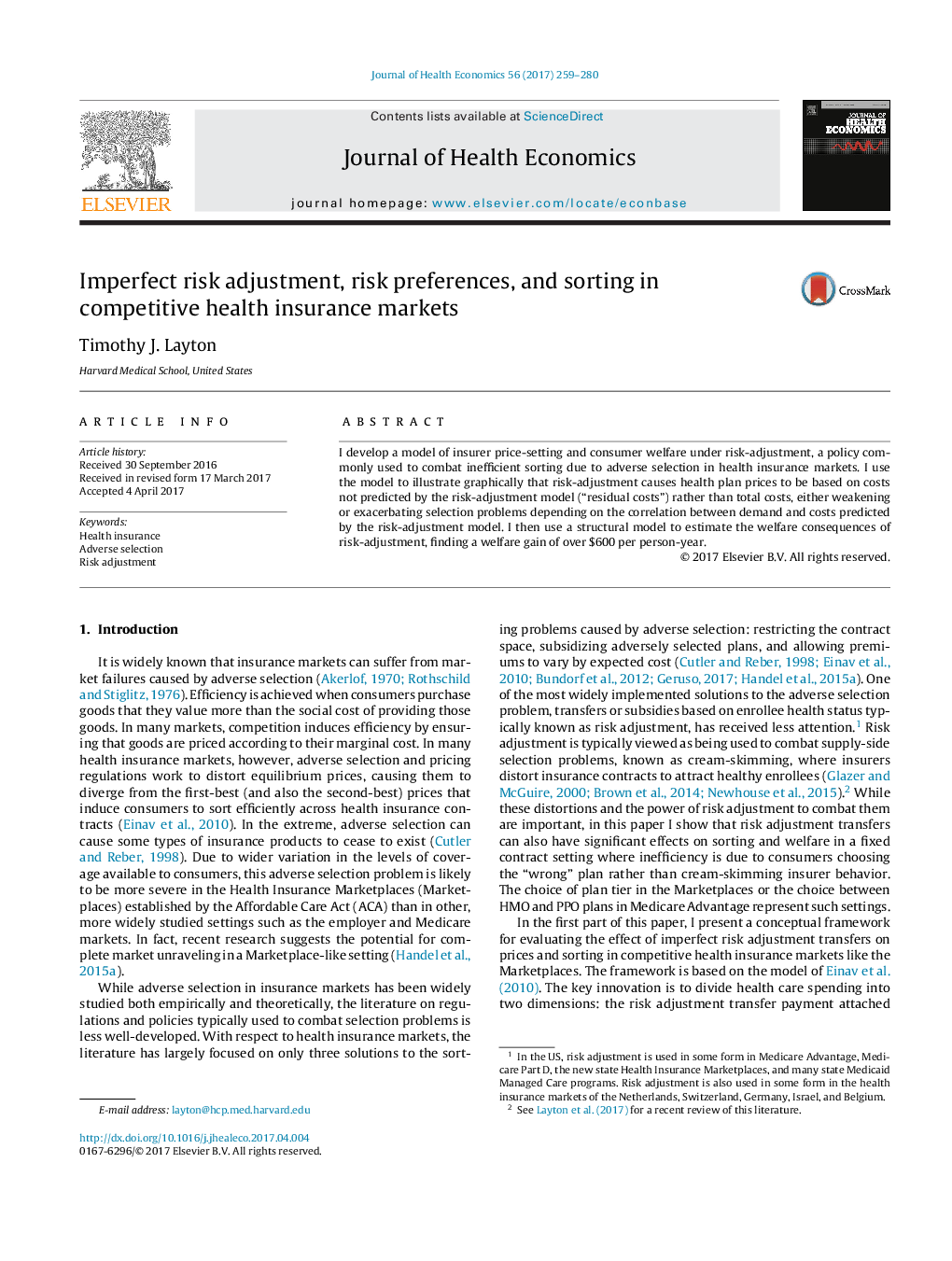| Article ID | Journal | Published Year | Pages | File Type |
|---|---|---|---|---|
| 7362998 | Journal of Health Economics | 2017 | 22 Pages |
Abstract
I develop a model of insurer price-setting and consumer welfare under risk-adjustment, a policy commonly used to combat inefficient sorting due to adverse selection in health insurance markets. I use the model to illustrate graphically that risk-adjustment causes health plan prices to be based on costs not predicted by the risk-adjustment model (“residual costs”) rather than total costs, either weakening or exacerbating selection problems depending on the correlation between demand and costs predicted by the risk-adjustment model. I then use a structural model to estimate the welfare consequences of risk-adjustment, finding a welfare gain of over $600 per person-year.
Related Topics
Health Sciences
Medicine and Dentistry
Public Health and Health Policy
Authors
Timothy J. Layton,
